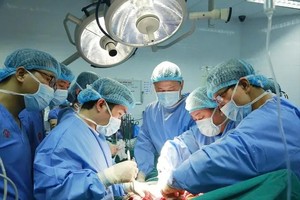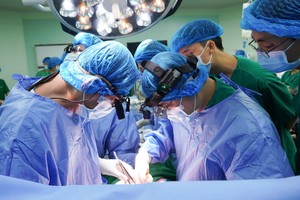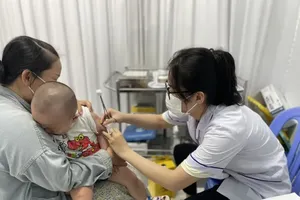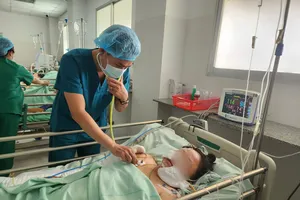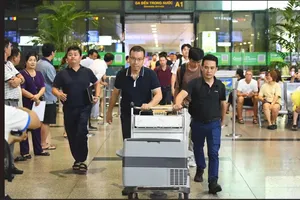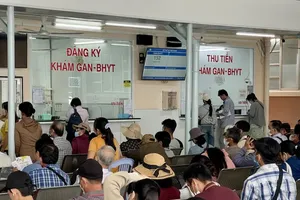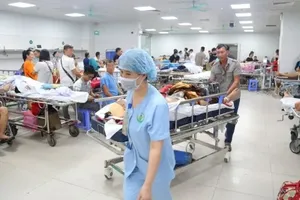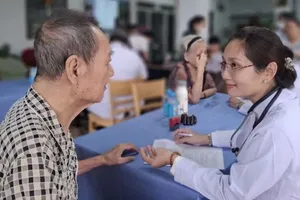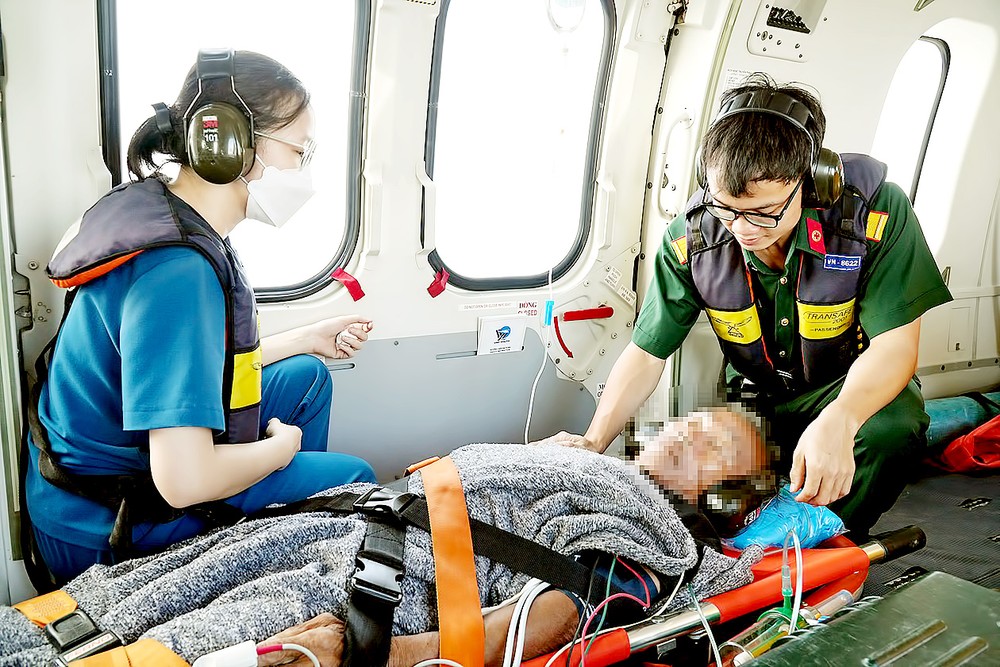 |
Air ambulance service is needed to save patients’ lives |
Air ambulance service is an essential service that uses a medical aircraft and aero-medically trained doctors and paramedics to transfer patients that are critically ill and going through the most challenging time of their lives.
Recently, while working on a fishing boat in the waters of Truong Sa archipelago in the South Central Province of Khanh Hoa, 54-year-old fisherman Vo Van Sy in Quang Ngai Province suddenly had a headache and half of his left became weak.
After being admitted to the hospital in Nam Yet Island, he was diagnosed with an acute stroke at the 56th hour, uncontrollable hypertension, and acute cerebral edema. Medical workers on the island can’t provide further treatment; so he was transferred to Military Hospital 175 by air for timely emergency treatment.
In early February 2023, a 9-month-old girl in the Phu Quoc island district in the Mekong Delta Province of Kien Giang was found to have acute myocarditis.
The family chartered a helicopter to transport the patient to the mainland. After receiving the information about the special flight, the ambulance of Ho Chi Minh City-based Children's Hospital 1 soon arrived at the airport to rush the patient to the hospital right after the flight landed. Thanks to timely treatment, the patient was out of danger.
Previously, a family in the Con Dao District of the Southern Province of Ba Ria - Vung Tau whose child was in a traffic accident leading to traumatic brain injury, rented a helicopter to transport it to the mainland. After the plane landed in Vung Tau, the patient was taken to Cho Ray Hospital for emergency and the patient escaped death. It is known that the cost of renting a helicopter to transport the emergency to the mainland is VND100 million.
According to Colonel - Doctor Vu Dinh An, Vice Chairman of the Military Hospital 175’s Emergency Department, since 2012, the Military Medical Hospital 175 has conducted the first emergency flights across the sea, bringing soldiers and fishermen from Truong Sa islands to the mainland to give first aid.
He revealed that the hospital established an Airborne Emergency Team in 2016. The Airborne Emergency Team has so far carried out nearly 100 flights of emergency transport by air, and all patients have been treated successfully.
Helicopters are ideal for transporting critical trauma patients because they are more effective in decreasing the time of transport to a trauma hospital. Most of the cases being taken to the mainland infirmaries are serious cases. Delay in accessing appropriate health care may lead to significant morbidity and at times also mortality. Especially, from the end of 2020, Military Medical Hospital 175 put into operation the helipad, which has significantly shortened the time to transport patients, said Colonel Dr. Vu Dinh An.
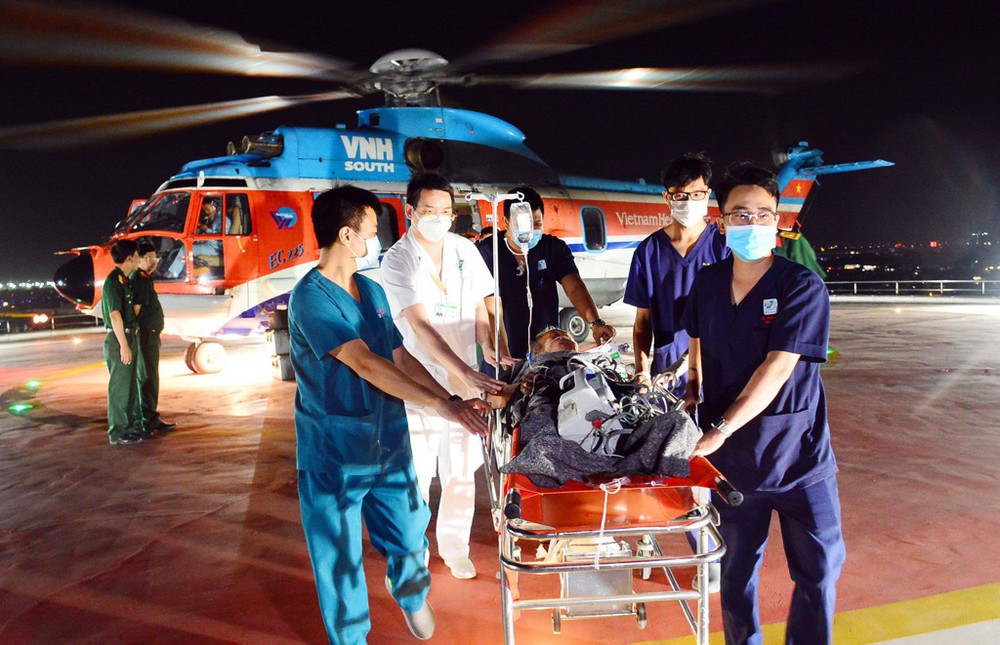 |
A patient is rushed to a hospital after the plane lands |
Colonel Dr. Vu Dinh An said that the demand for emergency transportation by air is increasing and this type of service brings great benefits but has not been replicated. Therefore, responsible agencies need to pay more attention to the replication and development of emergency transportation by air in the future to increase access to emergency medical services for people in remote and isolated areas who suffer from health problems.
Affirming that first aid by air is very urgent for critically ill cases that can be treated with intensive care in a certain time, Director of the city Department of Health Assoc. Prof. Tang Chi Thuong said this is the dream of every doctor participating in emergency work outside the hospital, emergency specialists and the healthcare sector, especially for multi-trauma emergency cases after an accident, stroke, or obstetric emergency in remote areas and islands.
However, in reality, this type of emergency transportation by air is very difficult to deploy for low-income countries because of very high operating costs, not to mention the strict requirements for air vehicles and air traffic infrastructure, on regulations for coordination between air transport providers and out-of-hospital and in-hospital emergency services.
According to the Ho Chi Minh City Department of Health, the new trillion-dong projects built in Ho Chi Minh City such as the City Children's Hospital, the 2nd Cancer Hospital, and the 115 People's Hospital have helipads.
This is a preparation for the patient's emergency needs, especially for severe cases who are living in island districts or in areas hit by natural disasters.
Currently, the issuance of flight permits is facing difficulties, making many hospitals unable to provide emergency services although they have helipads.
Dr. Phan Van Bau, Director of 115 People's Hospital, disclosed that so far the appraisal has been carried out while the license is managed by the Ministry of National Defense. The infirmary is in the process of completing the necessary procedures to ensure the earliest emergency flights.



